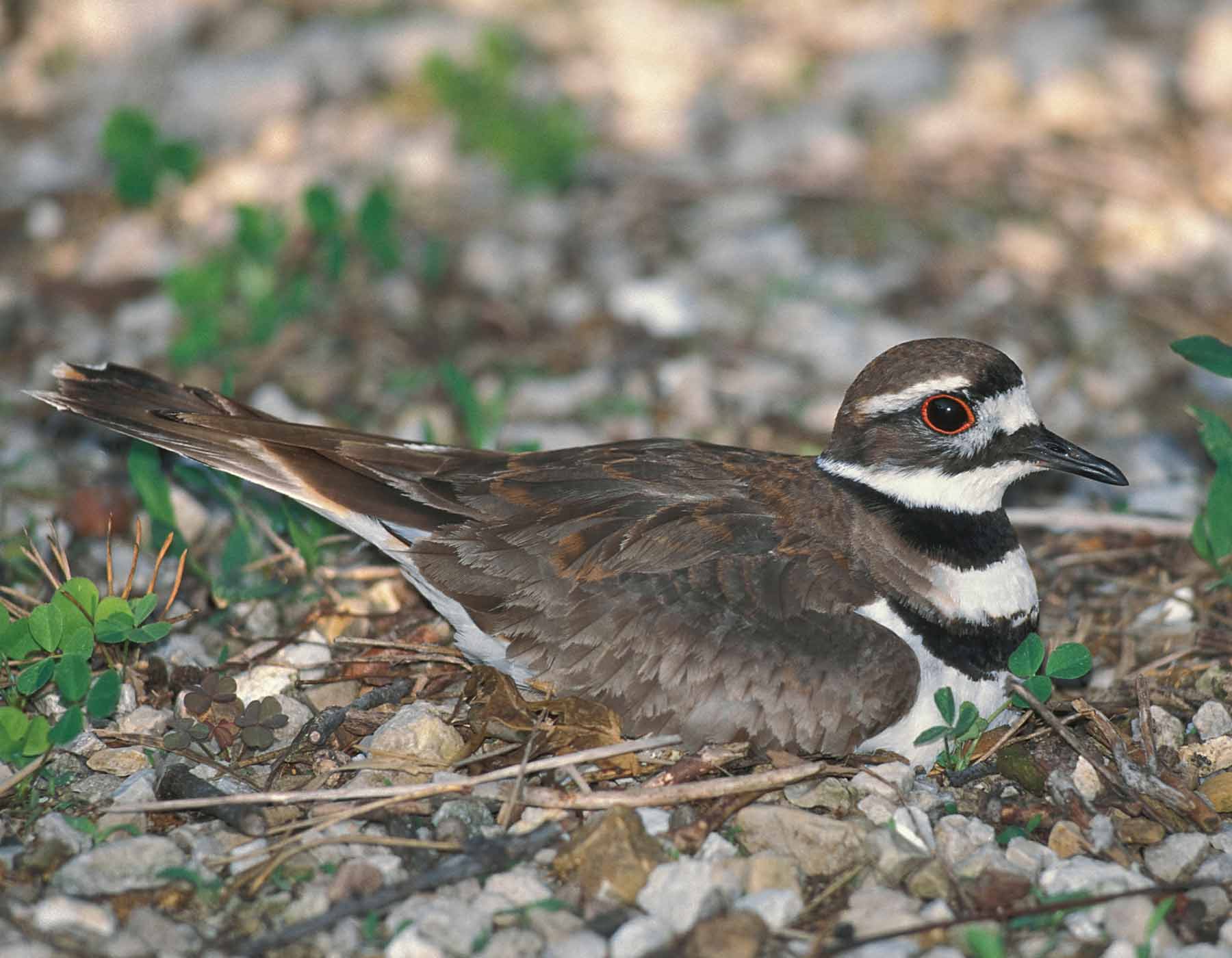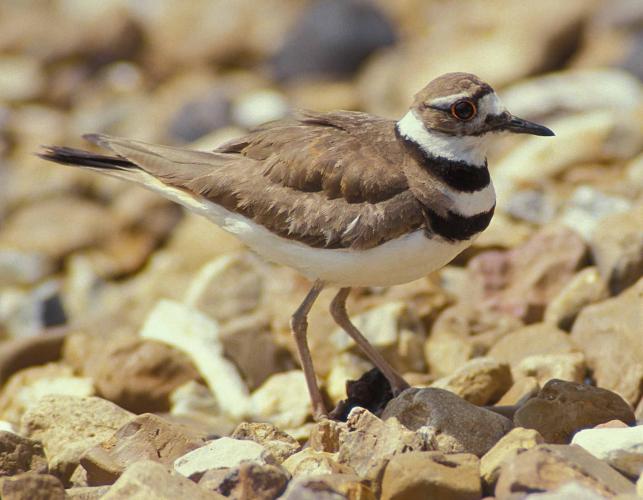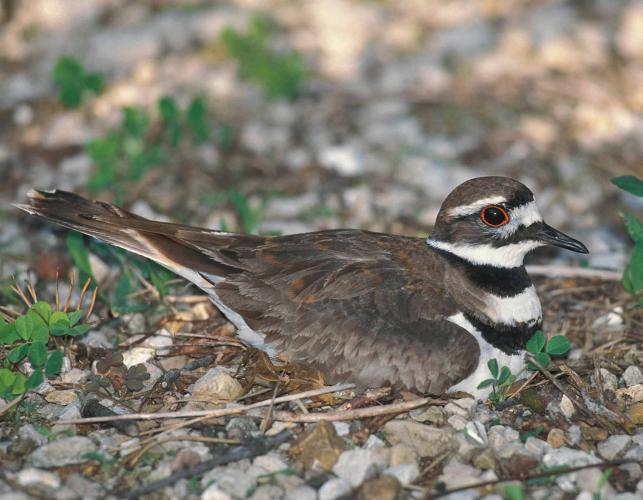
Killdeer adults are dark brown above and white below, with two black bands on the breast. Young, recently hatched killdeer have only one dark breast band and closely resemble the semipalmated plover. Adults create a distraction display intended to distract the viewer from the nest site or hidden young. They act as if they have a broken wing, move across the ground away from the nest, and make plaintive sounds as if in great pain. During this display, the bright orange rump and base of the tail, the white wing stripe, and the black-and-white tail bands are prominent. Flight call is a loud, shrill, repeated killdeer or k’dew.
Similar species: Seven plovers are known from Missouri, and the killdeer is one of the most common. By observing its foraging behavior, you can train your eye to distinguish between plovers and other shorebirds such as sandpipers. Plovers run, stop abruptly, and pick up food — very different from the bill-probing of sandpipers and other shorebirds.
Length: 10 inches (tip of bill to tip of tail).

Statewide. In summer, common in every county, but most numerous in the Big Rivers Natural Division (along the Mississippi and Missouri river floodplains) and in the Mississippi Lowlands (Bootheel). In winter, they are most numerous in the southern part of the state.
Habitat and Conservation
Although killdeer are plovers, and plovers are typically shorebirds, the killdeer is common in fields and other dry uplands. It forages and nests in and around flooded fields, golf courses, lawns, sports fields, muddy shorelines, gravel parking lots, and farm ponds. It prefers open, flat, relatively dry areas where grass is very short.
Food
Forages in open areas with no or very short vegetation for insects, worms, snails, and other invertebrates. Plovers usually forage on drier parts of mudflats, plowed fields, shallow-flooded fields, or short grassy areas such as lawns and golf courses. Visual predators, they tilt forward and run a short distance, pause, pick up prey from the ground, and repeat the search process. Their bills are larger at the tip than in the middle, somewhat like a dove or pigeon bill.
Status
Common migrant. Common summer resident statewide, but especially in the Bootheel region and the floodplains of big rivers. As a winter resident, uncommon in southern Missouri; rare in the north. Populations have been steadily declining continent-wide. They are poisoned when they eat insects contaminated by pesticides, and they frequently die in collisions with cars and buildings.
Life Cycle





Nests are shallow depressions scratched into the bare ground, often decorated with rocks and other objects. Parents use a “broken-wing act” to lure away possible predators. Like most other ground-nesters and waders, killdeer young are precocial: At hatching, they are covered with fluffy down and can run around very soon. Killdeer migrate from Canada into northern South America, with much of the Lower 48 states and Mexico as year-round range.
Human Connections
Killdeer have adapted well to human-altered habitats and often live quite close to us, foraging and nesting in grassy lawns, industrial parks, and even atop city buildings. If you’re looking for them, listen first for their distinctive calls. They fly in circles with pointed, narrow, stiff wings.
Ecosystem Connections
As predators, killdeer play a role in limiting populations of the various insects and other invertebrates they eat. As prey, killdeer frequently end up as food for mammals, raptors, and reptiles. Their famous “broken wing act” evolved as a response to predation — always a threat to ground-nesters.






























About 350 species of birds are likely to be seen in Missouri, though nearly 400 have been recorded within our borders. Most people know a bird when they see one — it has feathers, wings, and a bill. Birds are warm-blooded, and most species can fly. Many migrate hundreds or thousands of miles. Birds lay hard-shelled eggs (often in a nest), and the parents care for the young. Many communicate with songs and calls.





















